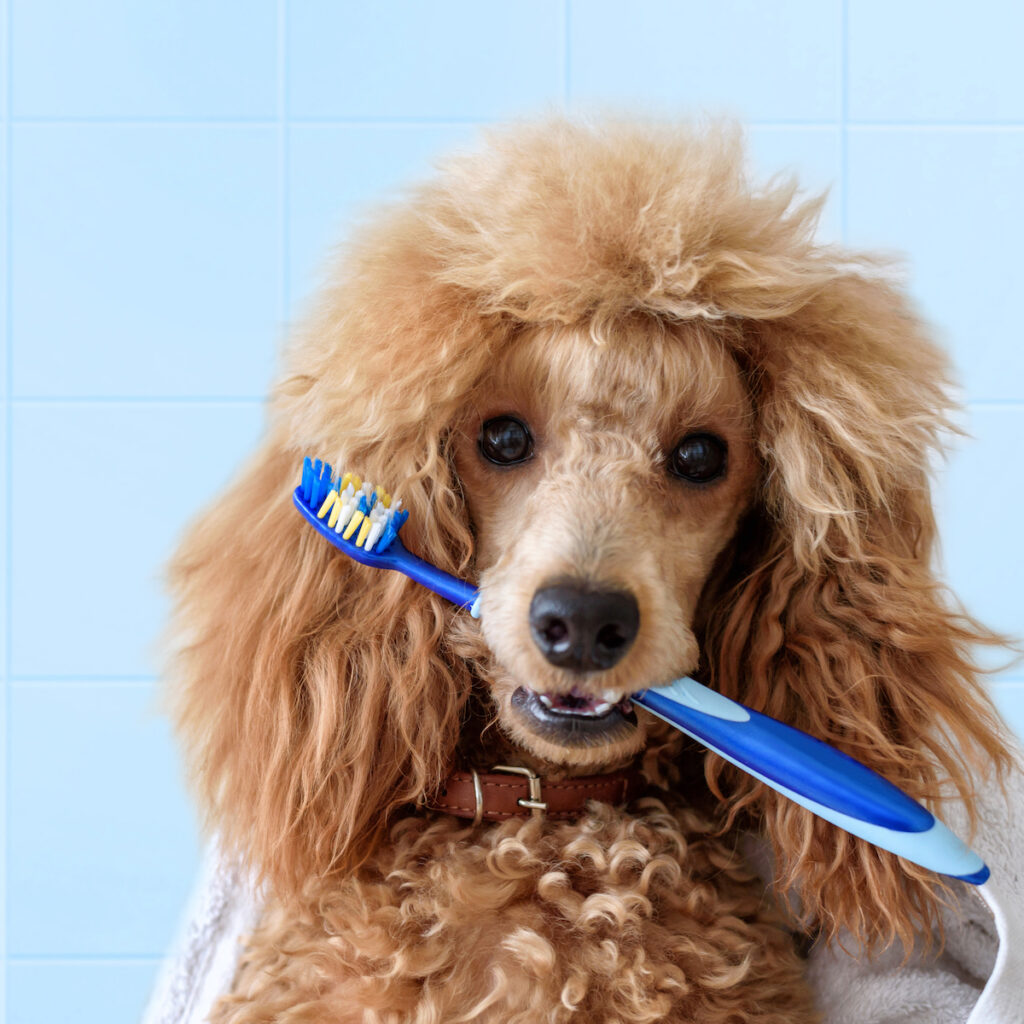
Oral hygiene is a very important aspect of our pets overall wellbeing. Poor dental health can lead to a buildup of plaque and tartar on the teeth resulting in mouth pain, inflamed gums, tooth decay, tooth infections or abscess and/or tooth loss. It can also be a contributing factor to much more serious health conditions and affect the heart, kidney, liver and joints. Brushing your dog’s teeth is one way to help prevent a build up of plaque and tartar on your dog’s teeth.
Here are the answers to some common questions about how to brush your dogs teeth to keep their smile sparkling.
How do I brush my dog’s teeth?
It is important to remember that not all dogs are going to like or even allow you to brush their teeth. Some dog’s will eventually get used to it and allow it but some dog’s may never let you. Some tips for brushing your dog’s teeth include;
- Start young. The younger the dog is when you start brushing their teeth the easier it will be. They will be use to it and understand it as just a part of the normal grooming routine
- Start out slow. First get your dog used to having their mouth, lips, teeth and gums being touched. Once they are comfortable having their mouth and teeth touched then you can introduce a brush.
- Find a toothbrush that you and your dog like. There are specially designed doggy tooth brushes to suit a dog’s mouth. There are also finger brushes that slip over your finger for you to then brush their teeth.
- Choose a toothpaste. There are toothpastes available for dog’s in a variety of flavours to make the experience more rewarding for your dog. You can make your own doggy toothpaste with safe ingredients but never use human toothpaste.
- Start by brushing just one or two teeth and continue to increase the amount of brushing time each day. Your aim is to brush their teeth for about two minutes a day. Brush all surfaces of the teeth and along the gum line to remove daily plaque buildup.
- Be gentle. Brush their teeth by making small circles with gentle pressure.
- Reward your dog. Use treats for positive reinforcement of good behaviour. This is important during the training stage and at each step that they let you do.
- Make the experience a positive one with calm and happy talk.
- Be safe. Being that your fingers and hands are in and around your dog’s mouth there is always a chance you could be bitten. Respect your dog’s limits and read the signs they give you that they have had enough or not enjoying it.
How often should I brush my dog’s teeth?
Daily brushing would be fantastic however this is often unachievable. If you can aim to brush their teeth at least once a week that will help to prevent excessive tartar and plaque build up.
Can I use human toothpaste?
No. Do not use your toothpaste on your dog as most human toothpastes contain fluoride which is actually toxic to dogs
Can I make my own doggy toothpaste?
Yes you can make toothpaste for your dog to help clean and freshen their breath. Popular recipes include a base of coconut oil mixed with turmeric and parsley for some added freshness.
What if i can’t brush my dog’s teeth?
If you don’t want to brush your dog’s teeth or your dog just won’t cooperate there are other ways to help keep your dogs teeth healthy and clean. There are a number of dental health products available to help reduce tartar and plaque on the teeth and freshen the breath. Dental treats are a popular choice and mechanically clean and remove built up plaque and tartar. Bones, dry food and dental toys also provide a mechanical cleaning of the teeth, removing plaque and tartar during the chewing and biting motions. There are also water and food additives that may reduce the build up of plaque and tartar and prevent bacteria from surviving in the mouth. A veterinarian can also perform dental surgery on your dog where they can scale (scratch off) the built up plaque and tartar from the teeth.
Should a vet check my dog’s teeth?
Yes, every dog should have their teeth checked by a veterinarian at least once a year but preferably every six months. This will ensure that any changes are monitored and any concerns treated as necessary. Many dogs require yearly dentals (scale and polish) as part of their routine health care. This can even be the case for dogs that have regular teeth brushing and/or dental treats.
To find out more about pet dental health including the signs of poor oral health visit our article on Pet Dental Health here.
